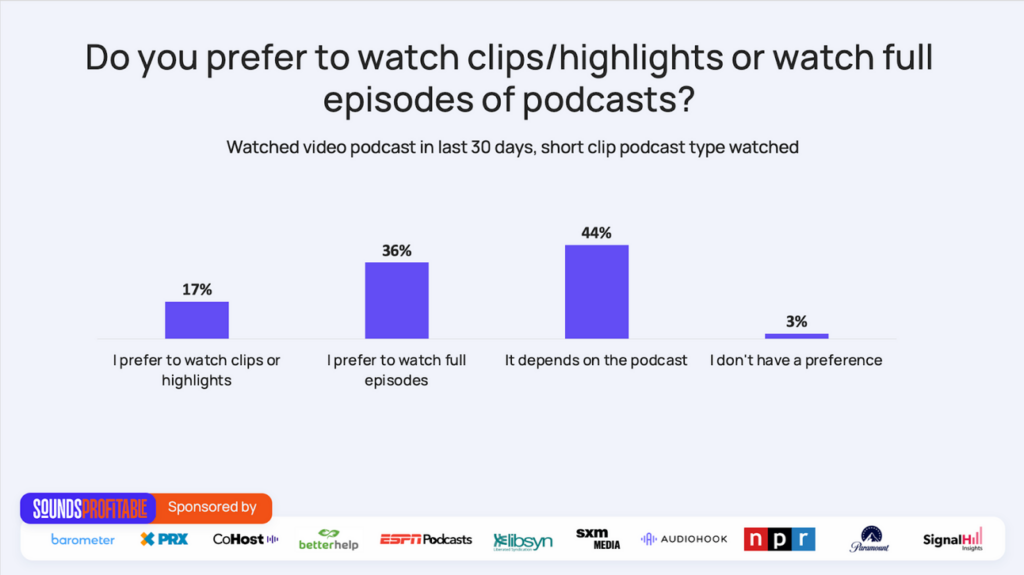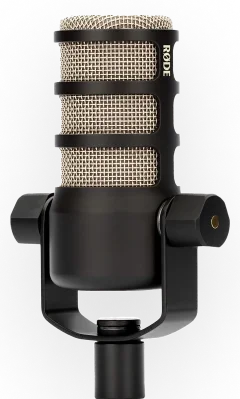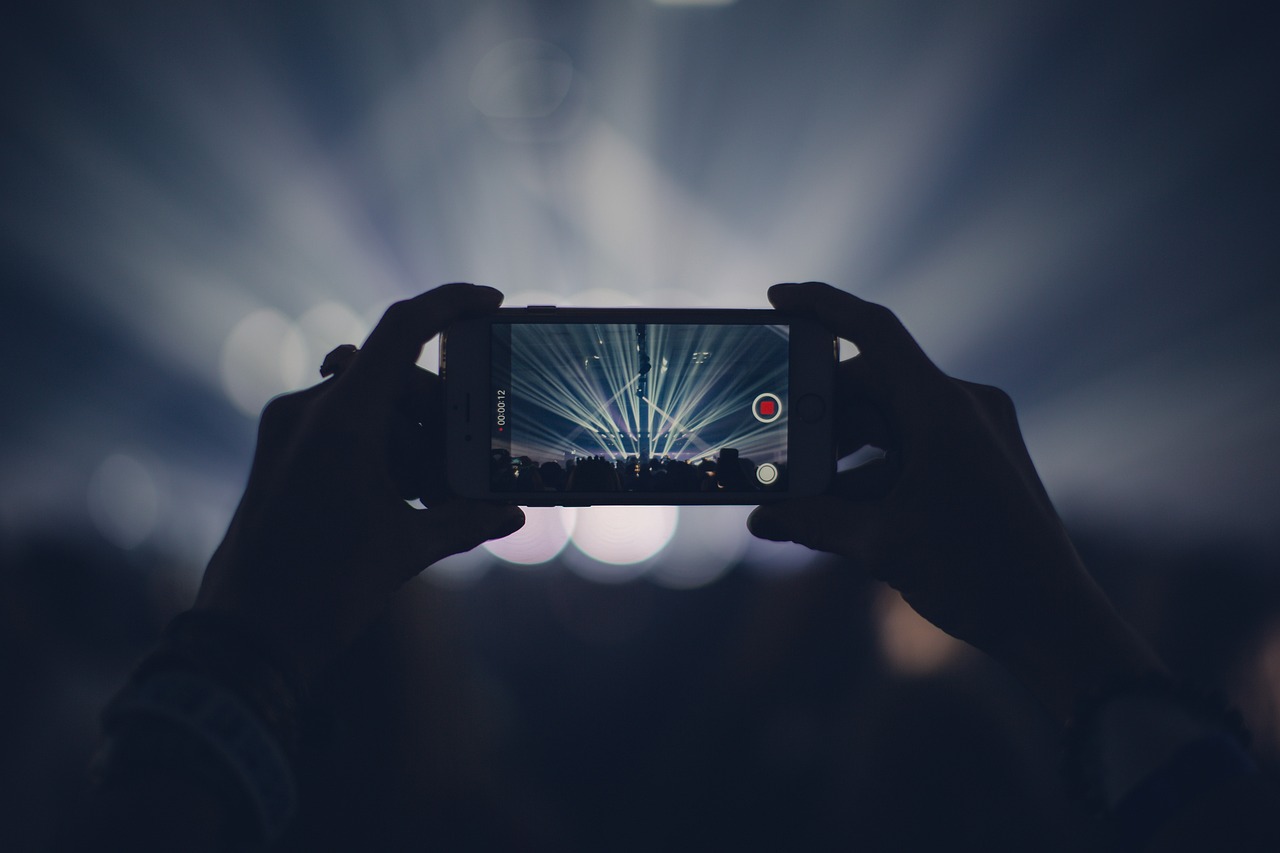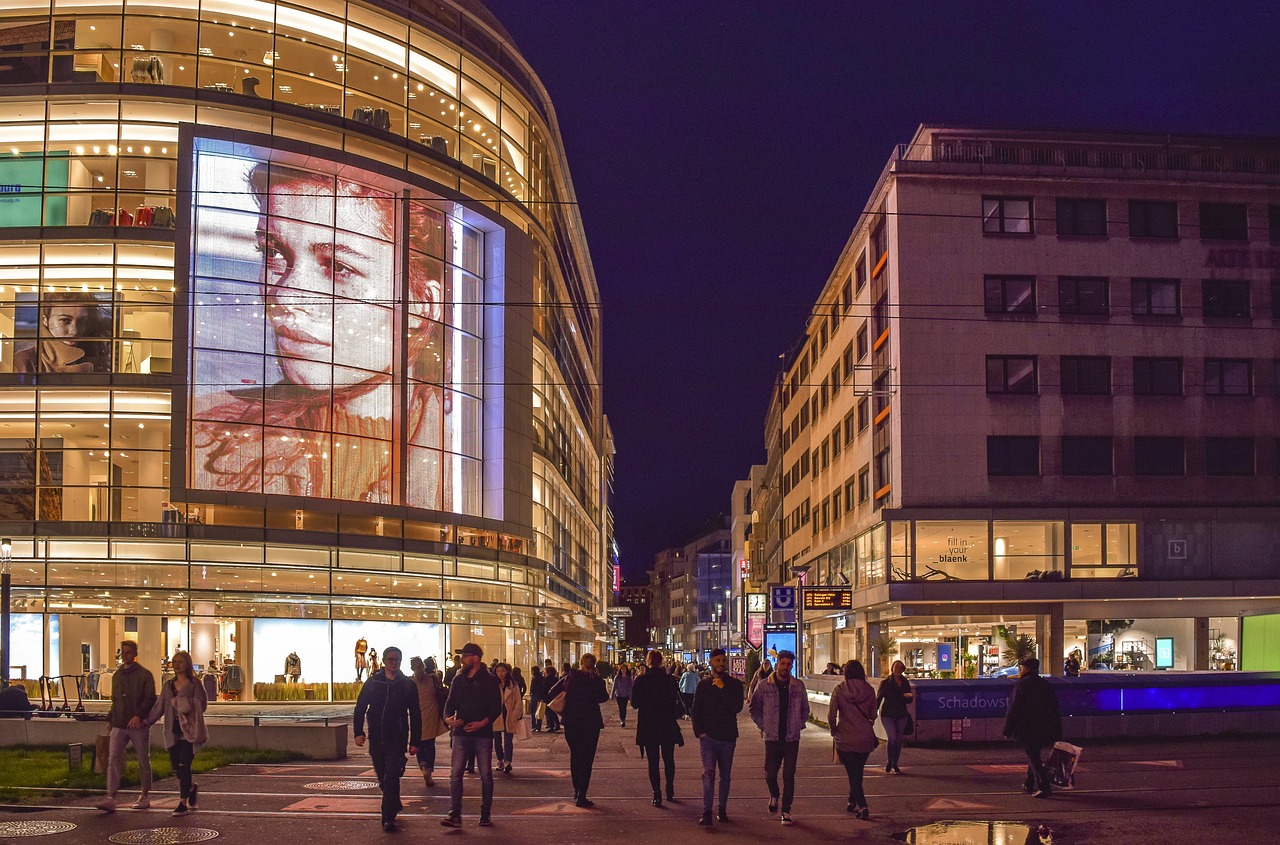For the first time, more podcast listeners say that they have watched a podcast in the last 30 days than have listened to one. Yet, simply popping your pod on YouTube is likely to fail. So, what are podcasters to do? Join us on Wednesday, December 13th at 2:00 p.m. Central for the debut of Sound You Can See: Podcasting’s Video Dilemma, the latest study from Sounds Profitable.
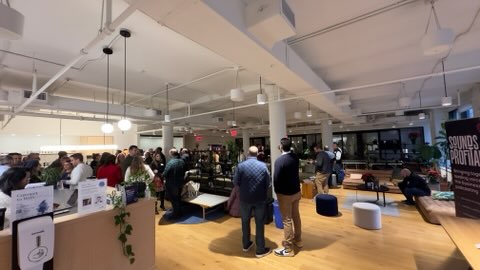
Before we get started, we want to extend a special thanks to everyone who attended the Sounds Profitable Business Leaders Summit yesterday in New York!
Next week’s release of Sound You Can See is going to prompt some discussions, I’ll wager, about how we think about the video podcast audience and the YouTube audience in particular. One of the reasons why we subtitled this report “Podcasting’s Video Dilemma” was to address one of the nagging questions we had about shows like The Joe Rogan Experience: when people say they consumed the show, did they listen to the podcast, watch the full show on Spotify, or watch clips on YouTube?
The audience is never wrong about these things, and the audience responded, loudly, “yes.” That’s the thing about audiences – they never fit neatly into one box or another. In different contexts and situations, they want different things, and have different priorities, and that’s the heart of what we are going to dive into with this report, which will debut in a free webinar next week (clickety-clickety).
There was SO much in this data about how and why people choose to watch or listen to their favorite shows that not all of it could fit into a single report, or Adobe might have sued us for an illegal PDF or something, I dunno. So I wanted to share something with you that was too good for the “cutting room floor” that I hope you’ll find interesting.
In the webinar, I’m going to outline exactly how Rogan’s audience consumes his show, and where his YouTube clips come into play. In general, though, I think we suffer in this business from a bit of binary thinking about clips vs. full episodes (and by clips, I mean a meaningful, self-contained segment, not a teaser or trailer.) What Rogan does is provide full value in his clips – a complete sentence, thought, joke, or conclusion that could stand on its own, whether or not you watch or listen to the full show.
I separate this from a trailer, because trailers are not necessarily what people want to see on YouTube (this is in the data). People watch YouTube to see the thing, not a tease for what the thing is. Sometimes, they want to see the thing in short form, and sometimes they have the time and the setting to see the whole damn thing. The key to long-term success on YouTube is to give them all of the things.
Some might say that clipping out the best punchlines or key exchanges in a discussion will satiate people’s appetite for the full show, and they will only watch the clip. It is true that some movie trailers give away the whole movie, but in those cases, it’s generally not a good movie, is it. I am assuming success for you – that your movie is good – and that a shorter piece of content, extracted from your podcast but entirely self-contained, won’t cannibalize the audience for your full show. After all, clips can be monetized, too, and the word for clip audience is also “audience”.
Part of this conclusion is based on the data from this question, which was asked to our sample of video podcast consumers who also watched shorter clips/highlights of their favorite shows:
If you just look at the preference for clips vs full episodes, the full monty runs at about twice the popularity – even with the existence of shorter clips. If your show is good, people watch/listen to the whole show. When they choose clips, it’s not you – it’s them. They are in a context, setting, or mood that doesn’t allow for the full show to be consumed, but they came to the show anyway – because they like the show! The choice to watch a clip is more often than not an ephemeral choice and not a long-term substitute for full-show consumption.
One other point to make, though, is that while the percentage of people who consume both and prefer full shows is 36%, the percentage that prefer clips, choose either depending on the show, or don’t have a preference is the other 64% (and, as the question is designed, 100% have watched both in the last 30 days). This means that by not having an option for people who can’t in a moment consume the longer version, you are incurring a bit of opportunity cost here by send them away to other short-form content when they are in that context.
We can’t always pay full attention to the content we are consuming, and that is one of the key messages of Sound You Can See. But by treating our audience with respect, and assuming the best of them, we can give them options to engage with our shows however they want to – or are able to. If your show is good, the clip won’t supplant the show, but it will allow for continued audience involvement even when they can’t always make the time for you.
We will have more on this (including how the Rogan audience responded to this question) next week – hope to see you there!
New Partners
Sounds Profitable exists thanks to the continued support of our amazing partners. Monthly consulting, free tickets to our quarterly events, partner-only webinars, and access to our 1,800+ person slack channel are all benefits of partnering Sounds Profitable.
-
Marbyl democratizes podcasting by making its content deeply and contextually discoverable and monetizable through patented Machine Learning technology designed for everywhere integration
Want to learn more about partnership? Hit reply or send us an email!


